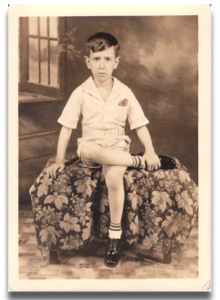
Among my lost childhood treasures that I have spent my recent adult years attempting to retrieve are Dennis the Menace comic books. Non-superhero comics have in the last few decades diminished to the point of near extinction, and while Dennis the Menace still enjoys a successful career on newspaper funny pages around the world, his four color adventures exist now mainly as collectibles and, at least for me, very happy memories.
In the late 1950s and 1960s, Dennis the Menace became quite the world traveler. His journeys around the globe were chronicled in a series of giant 25¢ comic books that proved so popular, many were reprinted multiple times over the next two decades. One of the best and most significant of these comics was
Dennis the Menace in Hawaii, originally published during the summer of 1958.

The romance of Hawaii had become a staple of post-war American popular culture, and with statehood looming, Dennis-creator Hank Ketcham decided to send his pint-sized headliner across the Pacific. Ketcham visited the islands in 1956, and the following year sent writer Fred Toole and artist Al Wiseman on a research junket with the aim of producing a giant 100-page comic book featuring Dennis and his parents on a Hawaiian vacation. Toole and Wiseman had been producing the Dennis the Menace comic books since 1953.
The Honolulu Star-Bulletin, in an article entitled "Dennis the Menace to Try Isle Imping," revealed that Ketcham surprised the pair with round trip tickets. It went on to report that both men and their respective wives were staying at the Hawaiian Village resort, just one of many island locations that would ultimately appear in their finished story.
In an era when comic book talent was rarely given any visible credit, Toole and Wiseman were featured in photographs on the book's inside front cover and a message from the publisher stated, "This book is the result of a special trip to the Hawaiian Islands by artist Al Wiseman and writer Fred Toole. Their on-the-spot sketches, photos and notes enabled them to draw and write this book as could only be done by people who had actually visited the islands."

Wiseman has long been held in high regard by comics aficionados and his work on the Dennis the Menace books is especially well respected. His talent can be seen throughout the Hawaii comic in his spartan but still very effective renderings of the sights of the islands. His art displays a remarkable attention to detail; in one instance he reproduces the menu from the famed Queen's Surf Luau.
Perhaps most memorable about the book is the sequence in which Dennis and his parents visit Peal Harbor. In an unusual move for a comic book, Toole and Wiseman related the events of December 7, 1941 via printed text and an accompanying detailed map-illustration. The sequence ends with a surprisingly emotional moment at the U.S.S. Arizona Memorial.
Dennis the Menace in Hawaii was reprinted a number of times subsequent to its initial publication. An abridged edition was released in 1969.
 From The World Book Encyclopedia 1959 Annual:
From The World Book Encyclopedia 1959 Annual:














